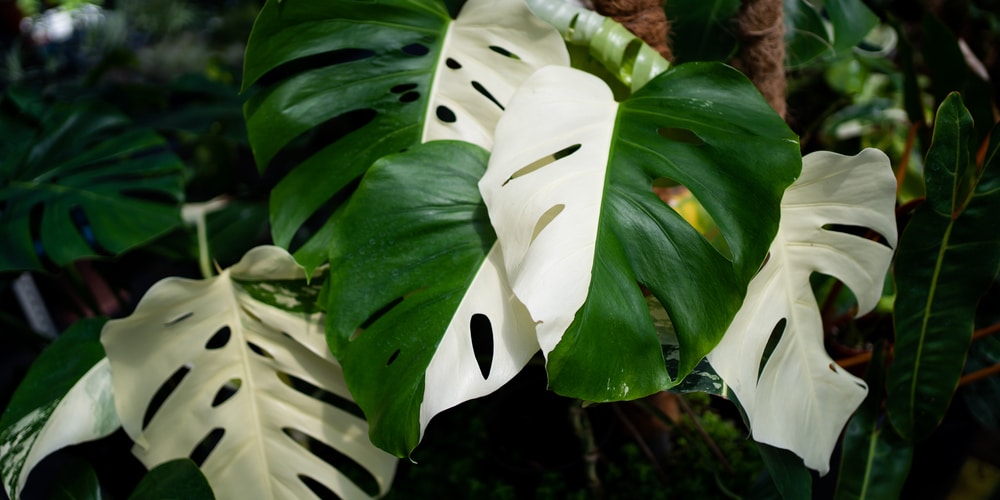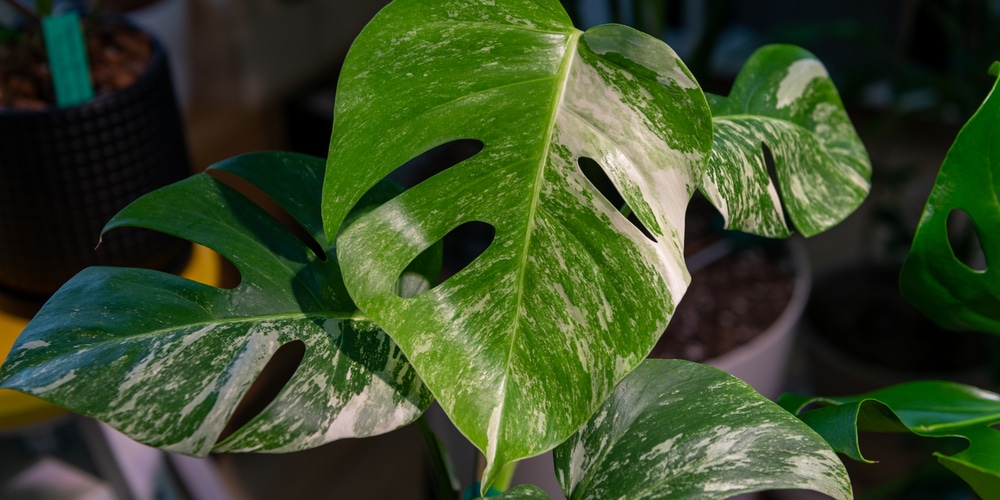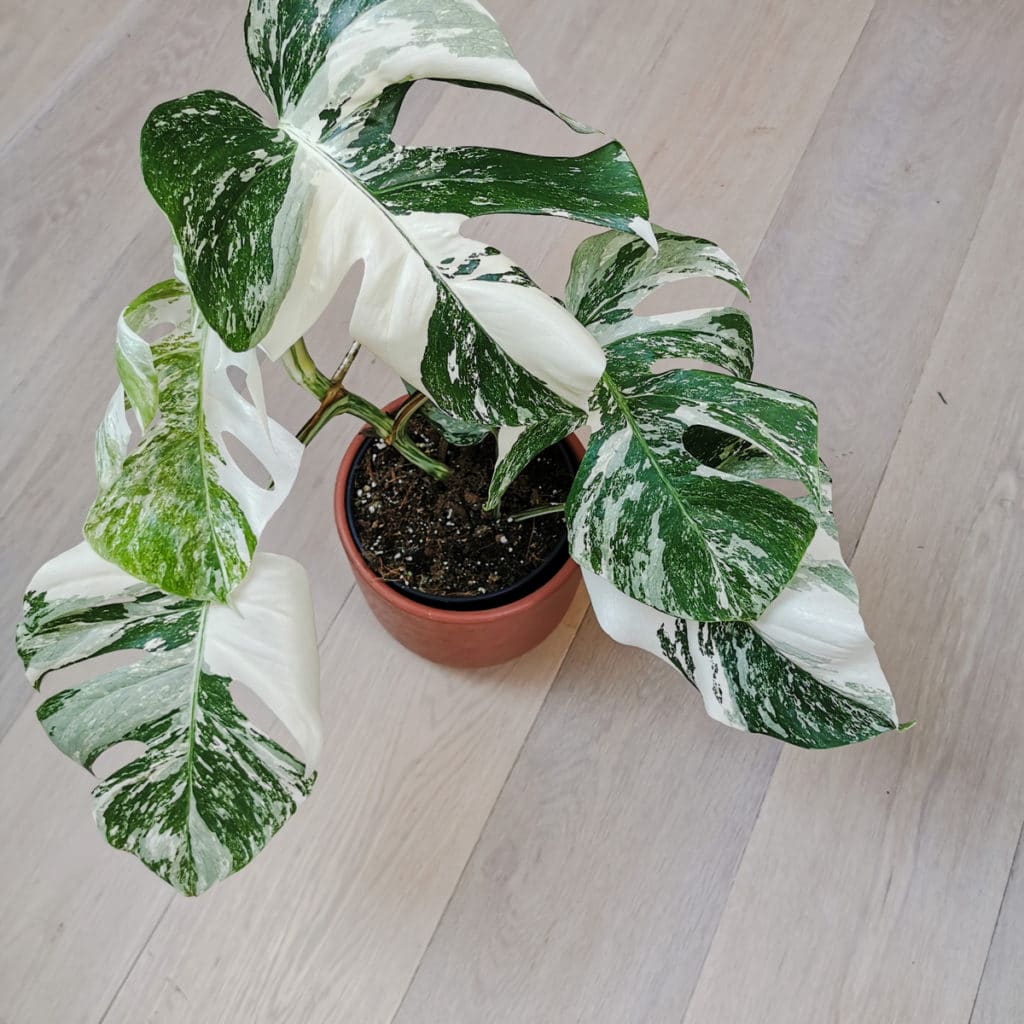Monstera albo is a variety of the popular monstera genus. These plants are also known as the cheese plants due to the holes in their foliage. They are beautiful plants native to South America.
The leaves of this plant are big and glossy, with splits that make them look very tropical. This plant is known for its large leaves and quick growth rate. If you’re looking to add a touch of jungle beauty to your home or garden, then consider growing Monstera albo!
What is a monstera albo plant?
Monstera albo or cheese plant is a tropical plant that originates from South American rainforests. The name Albo comes from the Latin word albus, which means white. This plant has white variations on its leaves and belongs to the Araceae family.
Monstera albo is a rare type of swiss cheese plant, which is expensive and may be hard to source. This plant has large split leaves with fine white markings and white or cream-colored splotches. Monstera albos plants can grow pretty big in the right conditions, up to 2 feet tall and 3 feet wide. However, this plant is one of the more compact of the Monstera plants. It also has smaller leaves.
It’s also worth noting that plants in the Monstera genus are toxic to humans and animals if ingested. It’s best not to grow a Monstera albo if you have young children or pets.
How to care for a monstera albo plant?
Monstera albo plants are easy to care for; as they are tropical plants, you’ll need to get the temperature, watering, and humidity right for your plant to thrive. These plants are commonly grown indoors worldwide but will also do well outside year-round if you live in USDA zones 10 to 12. Here are some tips to help you grow a healthy Monstera albo plant:
Sunlight requirements
Monstera albo plants are evergreens that require consistent sunlight that’s bright and indirect. If you can place your plant next to a window facing east or West, it will benefit from the light. When growing a Monstera albo outdoors, be careful not to plant it in the full sun as its leaves may become scorched, resulting in brown patches.
Watering
Monstera albos do best when the soil is moist at all times but not too wet. The Monstera albo plant hates to have soggy roots, so make sure that you don’t let the pot sit in a pool of water and that you don’t water it excessively.
Soil
Monstera albo plants require soil that’s peaty and well-draining. They prefer soil with a slightly acidic pH range between 5.0 and 7.0. If you’re planting your monstera albo outdoors, it will do well in sandy, loamy, or clay-like soils.
Humidity
Monstera albo plants like humidity and the leaves will look healthy and glossy if you mist them regularly. The best way to do this is by using a spray bottle that produces a fine mist. Be careful not to soak your plant’s leaves as this could cause fungal infections. You can also increase the humidity around your plant by placing it on top of a tray filled with water and pebbles.
Temperature
Monstera albos like comfortable room temperatures, around 65 degrees Fahrenheit. If you put your plant outside in the summer, you should bring it back in before the first frost. Sudden temperature changes can damage the leaves or even kill your plant.
Fertilization
Monstera albo plants don’t need fertilizing too often, but you should fertilize your plant every month during the spring and summer. Use a balanced fertilizer that contains nitrogen, potassium, and phosphorous. A 20 20 20 fertilizer works well.
Pests
Monstera albo plants are vulnerable to spider mites, mealybugs, and scale, so make sure you keep an eye out for any of these pests. If the plant has a pest infestation, you should treat it with an insecticide or remove the insects by wiping the leaves.
Pruning
The Monstera albo doesn’t require much pruning. You can remove dead or damaged leaves. You may also find that there are ariel roots growing from your plant. These can be tucked back into the plant’s pot or cut off and used for propagation.
How to propagate a monstera albo plant?
You can propagate Monstera albos by stem cuttings or air layering. This is an easy plant to propagate, but it’s important that you use a potting medium that drains well. The following tips will help you successfully propagate your plant:
Stem cuttings
1. Cut off 5 to 8-inch stem cuttings with sterilized scissors or a knife. Choose a stem that has a node, leaf, and ariel roots.
2. Put the cutting into a glass of rainwater and leave it for a couple of months until the roots grow. It’s best to change the water every few days.
3. Once the roots have formed, plant your monstera albo stem cutting by placing it into a moist potting medium. Keep the soil moist but not too wet, and place your cutting in indirect sunlight until new leaves appear.
Air layering
If your plant has already started to grow Ariel roots, you can propagate it using air layering using the following steps.
1. Find a node with aerial roots on your plants and make a small cut underneath. To do this, cut out a notch about 1/3 into the plant’s stem.
2. Wrap some sphagnum moss around the plant’s stem and secure it in place.
3. Spray the moss with some water to make it damp, don’t soak the moss or your plant’s leaves.
4. Keep the moss moist until your plant starts to grow roots.
5. Once the roots have grown, you can cut the stem off and plant it.
Conclusion
Monstera albo is an easy-to-care houseplant that needs medium bright indirect sunlight. You should provide it with humidity and enough water.
Water your Monstera albo around twice a week during spring and summer (less often during winter). Use room temperature water, and make sure you drain away excess water after you’ve watered your plant.
If you have healthy Monstera albo it should live for many years, so try to learn as much as possible about how to care for this plant before buying one.


